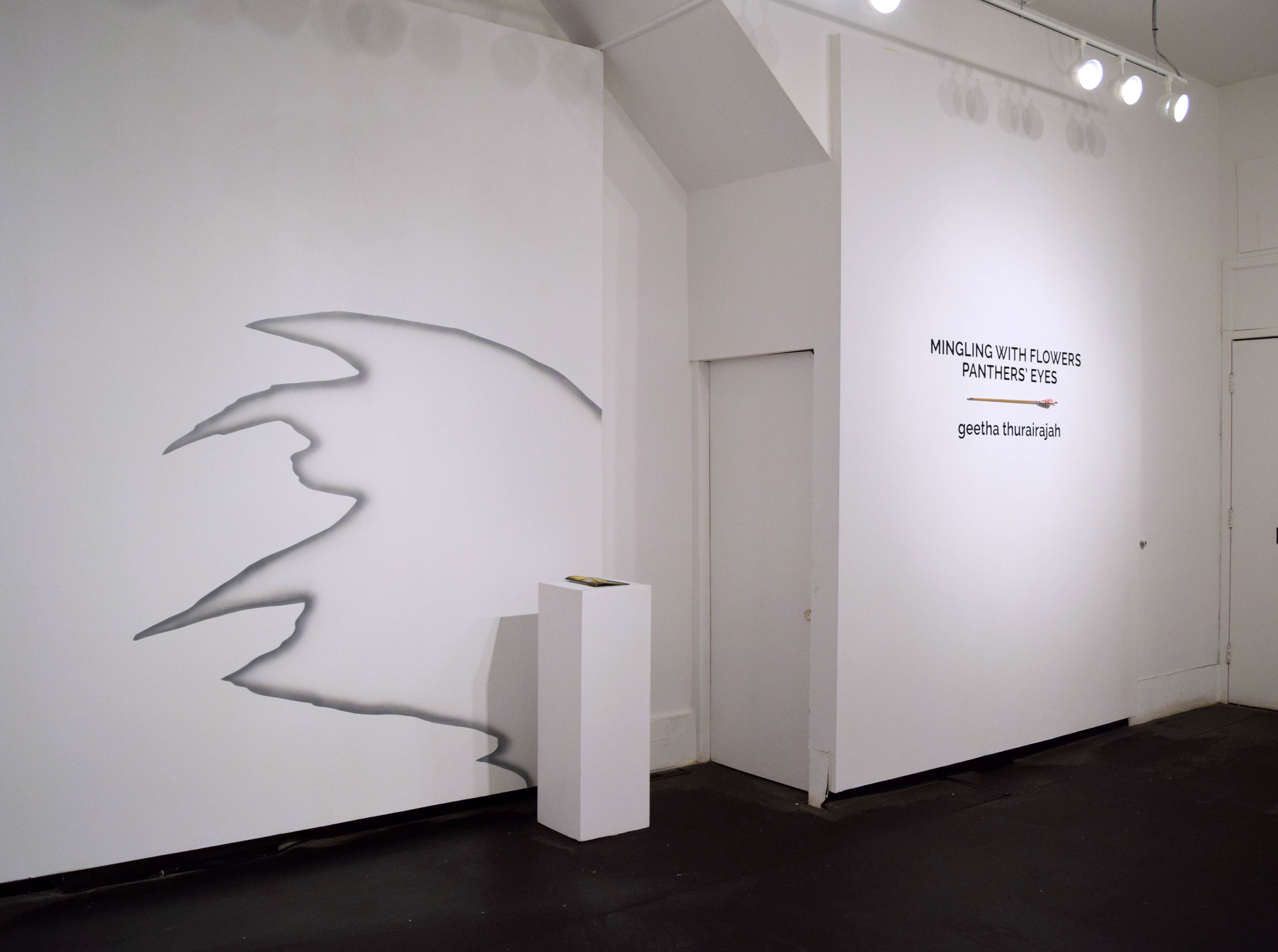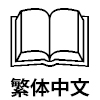MAINSPACE EXHIBITION /

Mingling with flowers panthers’ eyes
geetha thurairajah
Reel Canada Film Screening of Asphalt Watches, presented by TNG and geetha thurairajah on April 19, 7PM
April 7 — May 13, 2017
Exhibition Description
geetha thurairajah’s paintings are theatrical spaces where multiple expressions of identity perform in a single act. Existing between the digital and physical, her paintings employ abstraction and allegory in order to reflect the irony, complexity and confusion of a diasporic experience.
Virtual reality is mimicked within thurairajah’s paintings as visual referents deny the boundaries of time and space while occupying nondescript spaces. The symbols of an absent Sri Lankan heritage appear next to images stolen from painting’s history. Abstracted forms guide viewers through artificial realities. It is thurairajah’s intention to create stages that invite spectators in as performers through first-person viewpoints while still reminding viewers of their gaze. Believable forms and spaces are shattered when the boundaries of the painting’s surface become a pictorial ledge or an expressive application of paint becomes a plant.
thurairajah’s painting process begins with digital drawings created on a tablet. These drawings are then rendered into physical paintings using traditional painting techniques as well as technology like the airbrush. The motivation behind her process is to create paintings that exist in a state of inbetweeness, somewhere between the digital and physical, the abstracted and representational.




Exhibition Text
At first encounter with geetha thurairajah’s paintings, they struck me as cinematic. I was immediately reminded of the film Tropical Malady (2004), by the Thai filmmaker Apichatpong Weerasethakul. The paintings resonated with the film for a few reasons, the intensity of colour, the use of depth-of-field, and the play on subject formation. But when I refer to the paintings as cinematic, I am also thinking about the relation between movement, perception, and affect. Furthermore, geetha’s paintings, while they do allude in some ways to “painting’s history,” are autonomous in how they blur the lines of representation, putting into question pre-established positions of viewing, as they are rendered at times through a readable object and subject formation. This is playfully and skillfully explored through her mode of painting, which is accentuated by her technique and use of colour, the impact of which is the opposite of a flat surface.
As viewers, we are entering a multi-dimensional scene. Suddenly, we notice the mode of technology that is animating a figure (Finding Our Way Back): a depth-of-field (Make It Rain), an action (It wasn’t the right kind of performance…), the creation of a scene that engages the audience with an abstracted view (From Here You Look Different To Me). We’re entering a world where colour gives life to different subjects, and these subjects – whether an animal, vegetation, a ledge, a frame, a cross – are as much human as they are non-human. There is something even more complex occurring. As audience, we are not passive in how we engage the terrain of colour. We are made to assess the situation, participate in the story, the mystery, the telling of what comes to be seen. We are prompted to notice how we are looking, not at but with the subjects in the paintings. The framing of each piece resembles a camera lens, focusing in at a particular angle, on a particular object, a movement activating a sense of wonder, intrigue, dynamism and trance. The frame does not merely condition a certain point of view, but a position, a first-person encounter: perception is embodied. We are engulfed by the edges of the frame. What might seem as a limitation or a border, instead becomes supple, inviting us in to see, to engage with a peculiar environment of relations expressed through close-ups that highlight an elbow, a foot, the pouring of water, a bush, a banana by a bottle. As geetha has expressed, “believable forms and spaces are shattered when the boundary of the painting’s surface becomes a pictorial ledge or an expressive application of paint becomes a plant.” The images created through this technique of abstraction that geetha describes as “existing between the digital and physical,” shatter the illusion of a colonial gaze – one that objectifies. geetha’s work allows us to reflect upon the making of images, bringing about a renewed relation between intention and technique.
We are being asked, invited, prompted to see differently, to shift focus, to consider the edges of things, the molecular movements of lived experience, animated by the frame of vision. At the same time, we are made aware of the fact that we know that what we are doing is looking. The painting activates our position as one that is subject to the scene; we are not separate from it, but part of the story that is unfolding. Our experience is emboldened by a feeling of confusion, as in a dream, a complex alternate reality that refuses to be contained, defined, enclosed.[1]
[1] I would like to thank Sunny Doyle for her rigorous edits and insights on this piece.
Biographies
geetha thurairajah (b.1986) is a visual artist living and working in Toronto, Canada. Her paintings vacillate between digital and physical form. thurairajah’s artworks simplify narrative into a language of icons; flat and hard-edged, her paintings push the real into the impossible.
thurairajah earned her BFA from the Nova Scotia College of Art and Design in 2014. In 2016, she was a finalist in the RBC painting competition. She has held solo exhibitions at 8eleven Gallery (Toronto), AC Repair Co. (Toronto) and Projet Pangée (Montreal). Her work has been featured in Editorial Magazine, Canadian Art and Paper Magazine.
Nasrin Himada is a writer, editor, and curator residing in Toronto. Her interdisciplinary research focuses on experimental cinema, the relationship between art and poetry, and the militarization of urban space through prison infrastructure and police surveillance. She has lectured extensively on these topics, including presentations at the California Institute of the Arts, Georgetown University, and INCA Seattle. Her curatorial work has been exhibited at DHC/ART: Foundation for Contemporary Art, Echo Park Film Center, 16 Beaver, and Image + Nation. From 2011 to 2016, Nasrin co-edited the journalScapegoat: Architecture/Landscape/Political Economy. She is the co-editor of the inaugural issue of MICE Magazine on the theme of invisible labour, and is presently the curator at Art Metropole.
A special thank you to Chateau Kwong (VRBO listing #873983) for hosting the artist.

